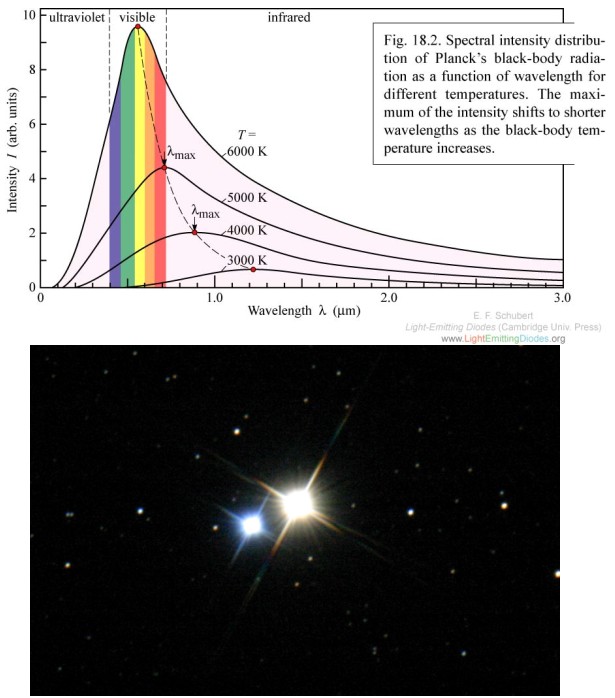This has been bugging me all day, and Googling for the answer only turned up two pages by astronomers who wish they knew the answer, so I figured I need to ask someone.
The sun is yellow. But sunlight is white.* Why?
A yellow lightbulb (or a white lightbulb behind a yellow filter, or whatever) gives off yellow light, while a white lightbulb gives off white light. The white moon gives off white light. And so on. I can’t think of any counterexamples, except for the sun.
I’m guessing there’s some obvious reason, and I’ll either figure it out in my sleep tonight or whack myself in the head when I read it here tomorrow… but right now, the best I can do is two theories, neither of which seems that plausible.
Maybe it’s because we see the sun in contrast to the sky, which is blue, so it seems to be the opposite, which is yellow. But that seems wrong–that would imply that against a red sunset sky we’d see a cyan sun, when actually we see a red sun. (Unless there’s some other factor there that massively outweighs the contrast or something?)
Or maybe our eyes register yellow when they’re overloaded with too much light? But that doesn’t seem to be true in other cases. (It’s a bit hard to tell what color you’re seeing when you’re being blinded, but the negative afterimages definitely aren’t blue.)
After that, I’m out of theories, at least for tonight.
Thanks.
- OK, sunlight isn’t pure white as in “an even mix of every wavelength in the spectrum”, but as in “a mix that our eyes record as white” (probably for evolutionary reasons?). But it’s human psycho-optics that matter here, not pure optics. And in terms of pure optics, the Sun is more blue than anything else, peaking at 4800Å or so.

